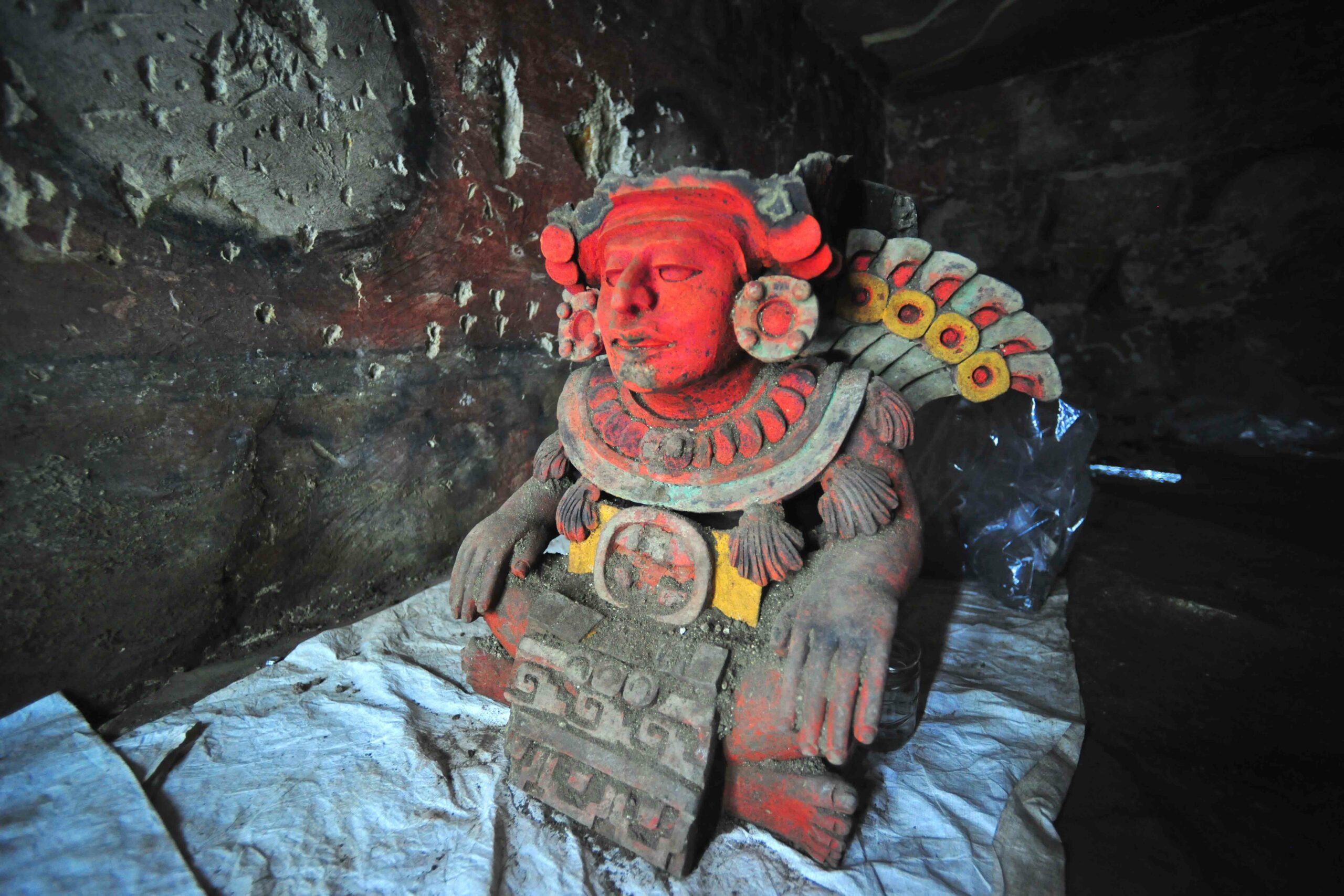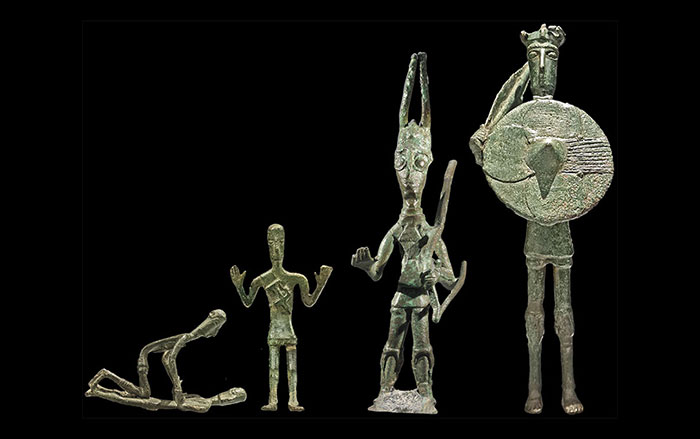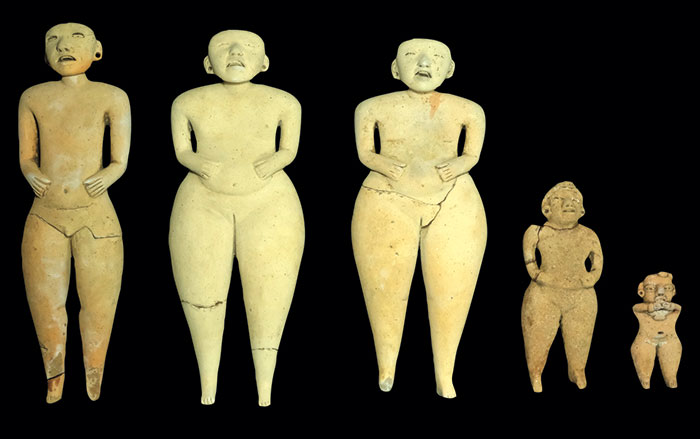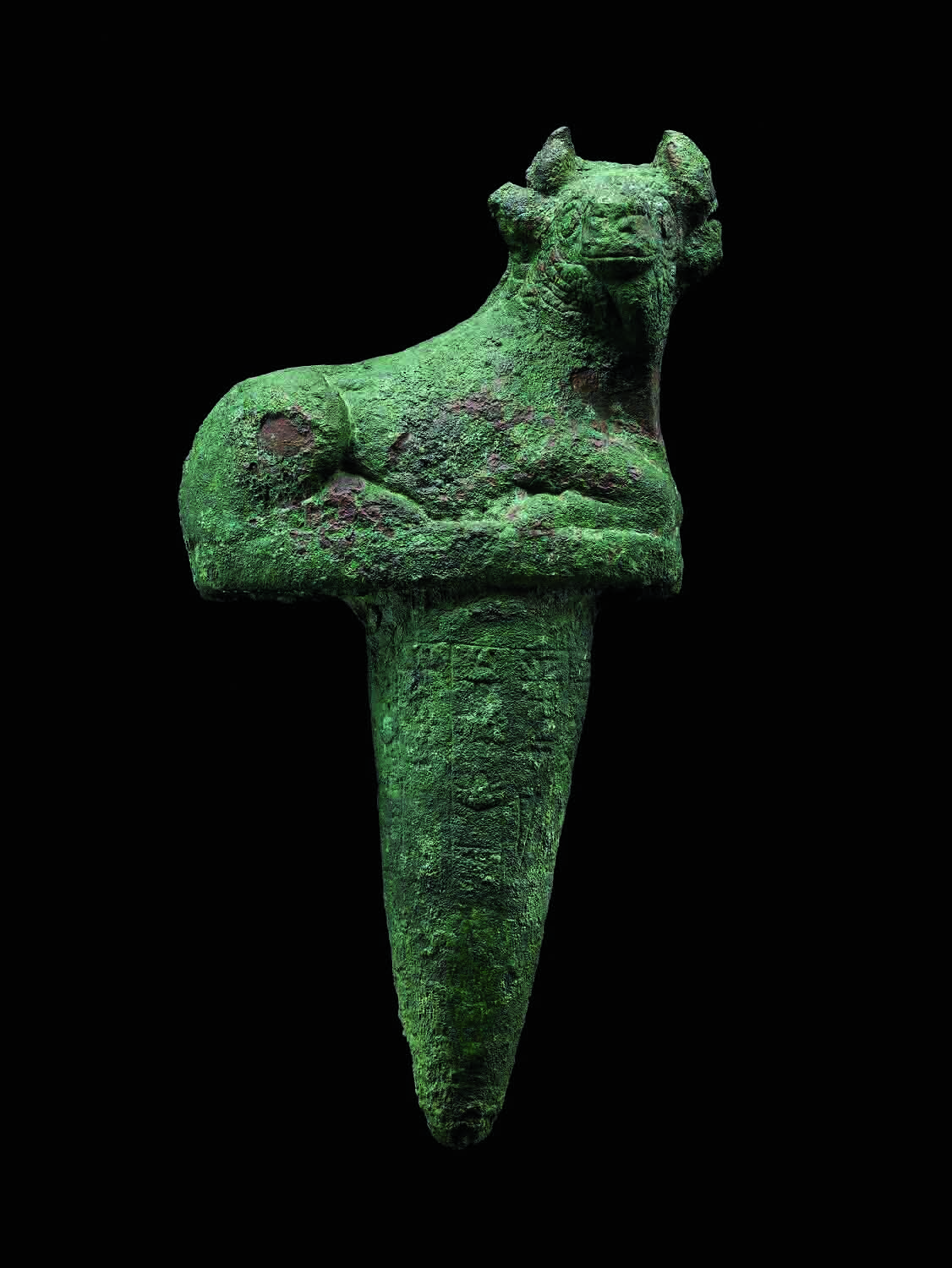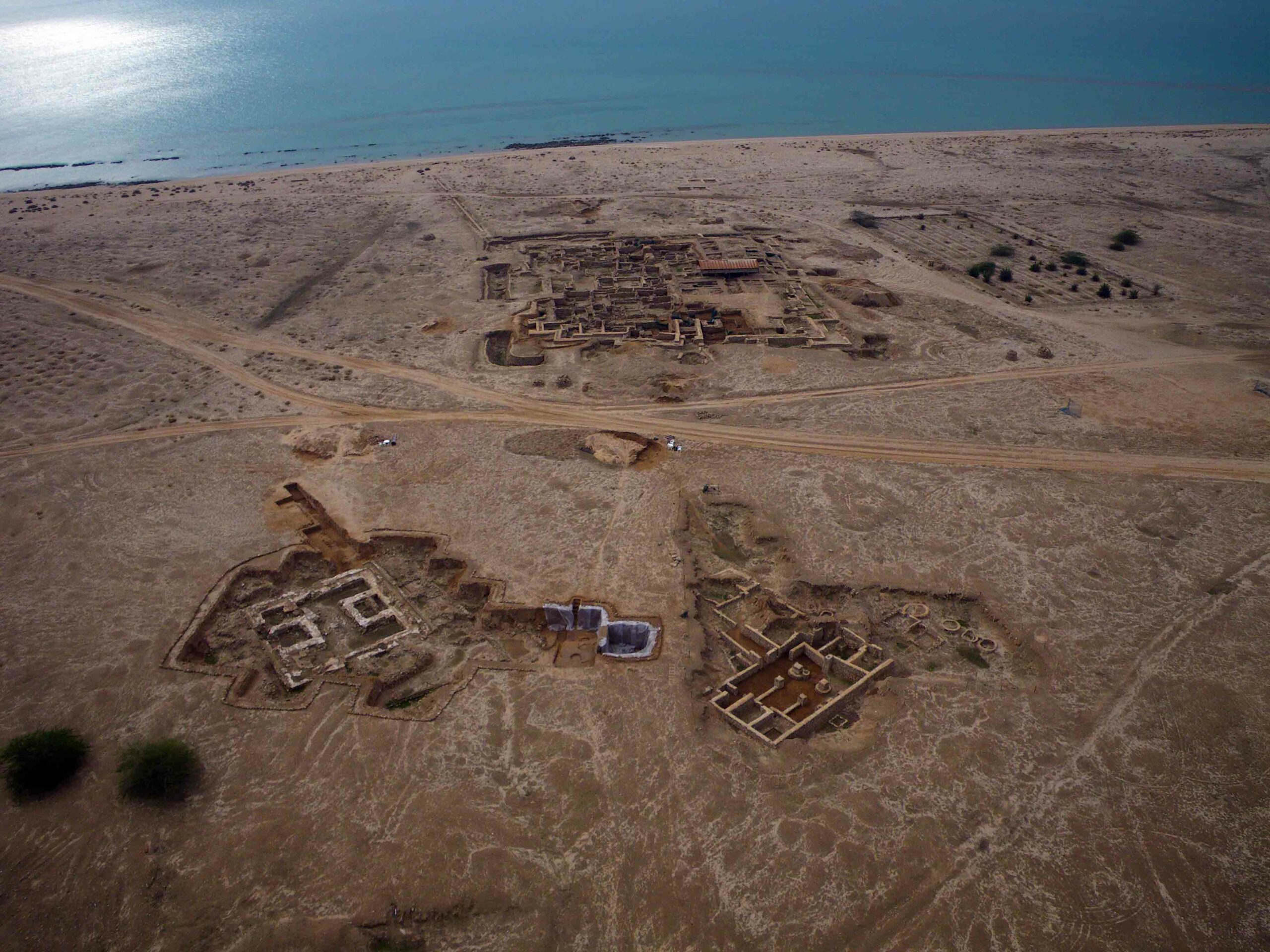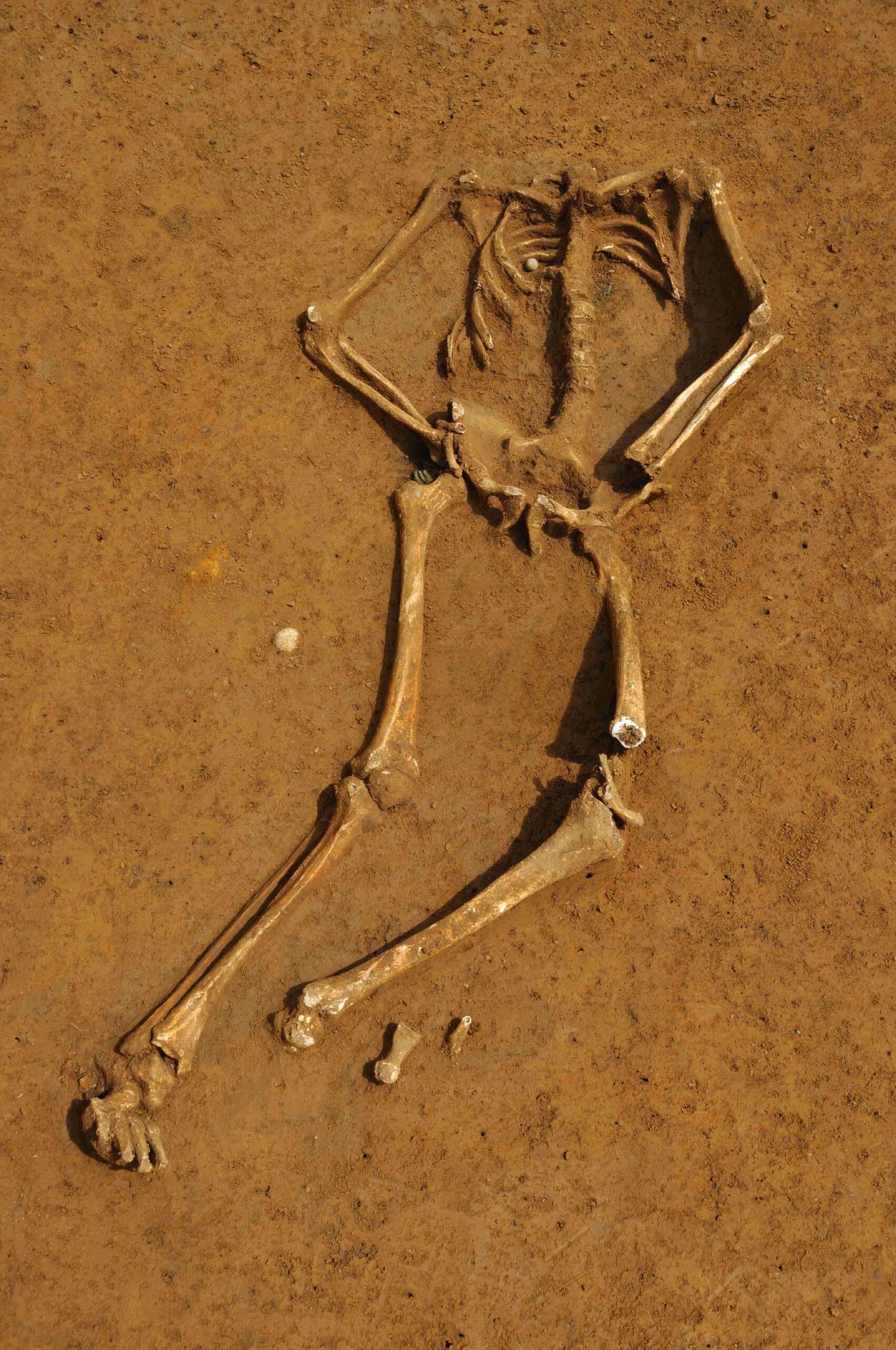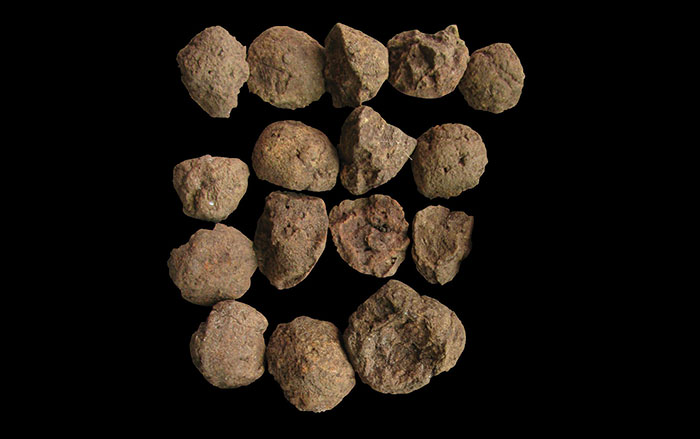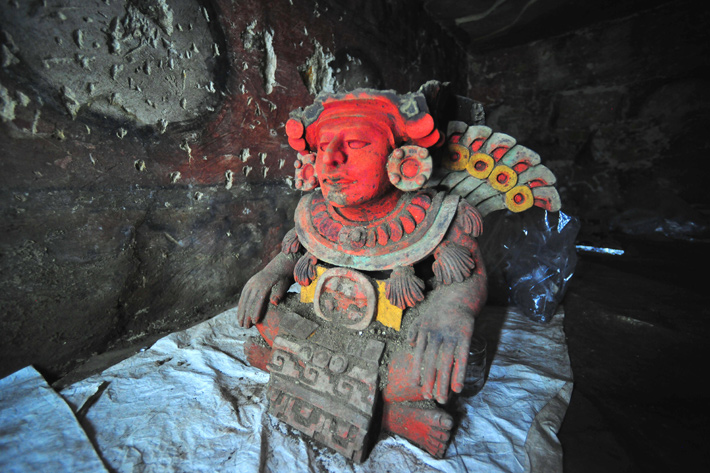
The site of Atzompa in southern Mexico was a suburb of the great Zapotec capital city of Monte Albán 1,200 years ago, when a man and a woman were laid to rest there in an elaborately painted tomb (“High Rise of the Dead,” November/December 2012). Recently, a team from Mexico’s National Institute of Anthropology and History finished excavating a colorful figurine from among the objects left with the deceased. Some researchers believe it may be an image of the man buried there, or of one of his ancestors. Interpretation of the figurine’s clothing, jewelry, and vivid coloration has much to say about Zapotec culture.
The seated statue is more than 30 inches tall and wears an elaborate headdress that would have been part of a costume symbolizing a person’s name and station within Zapotec society. According to Marc Zender, an expert in Mesoamerican iconography at Tulane University, painted figurines similar to this one were not rare among the Zapotec, but the variety of pigments used on this one seems to be something special.
A bar with three dots on the figurine’s apron is a glyph that represents the number eight. Above that is a circular glyph that means “earthquake” or “tremor.” Zender explains that the symbols spell out the day in the Zapotec ritual calendar when the person was born, and would also have been his name: Eight Tremor.

The figurine’s vibrant colors carry other important meanings. Images of people, as opposed to those of gods, were usually painted red in Zapotec artwork, Zender says. The greenish circular ornaments on the figurine’s ears, called ear spools, were fashionable among nobles of the neighboring Maya. Their color suggests they may depict spools made of jade, which would have been acquired through trade with the Maya. “It speaks nicely of how dialed in Monte Albán was to widespread trade routes,” says Zender.
Spreading out to either side of Eight Tremor’s head are green feathers that likely represent those of the quetzal birds that live in the cloud forests of Guatemala. Above those sits a brilliant red headdress depicting a mythological fire serpent. According to Zender, this was a symbol worn by war leaders across Mesoamerica. Its roots can be traced to the ancient city of Teotihuacán, 280 miles north of Atzompa, and the symbol had been in use for at least 500 years before the figurine was buried.
Zender also notes that pigments have often disappeared by the time artifacts are unearthed. “Color is really more common than we think,” he says. The Zapotec clearly had a tradition of painting figurines in monochrome, but, Zender adds, “this one, where all the colorful details are picked out, is like a mural come to life.”


